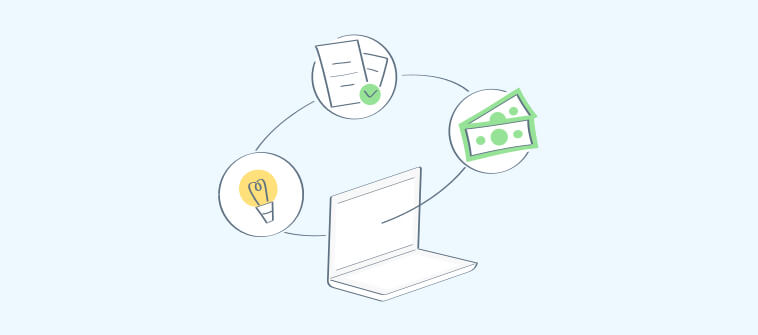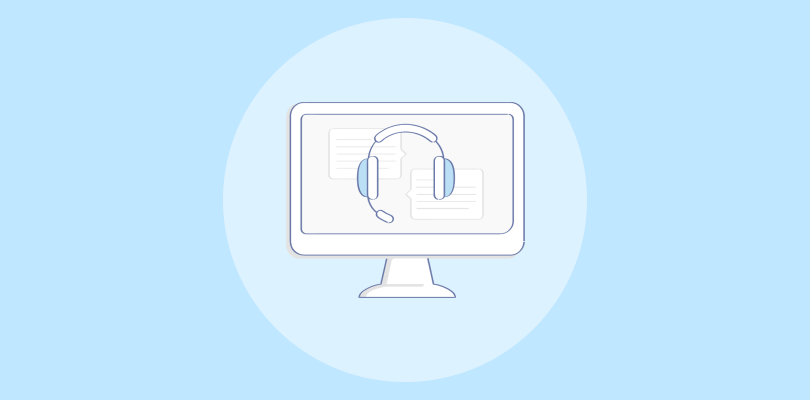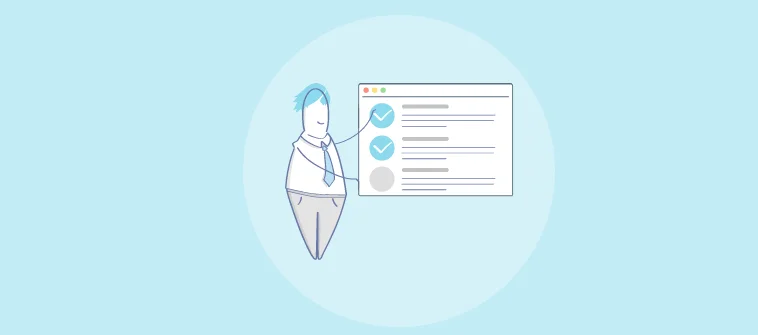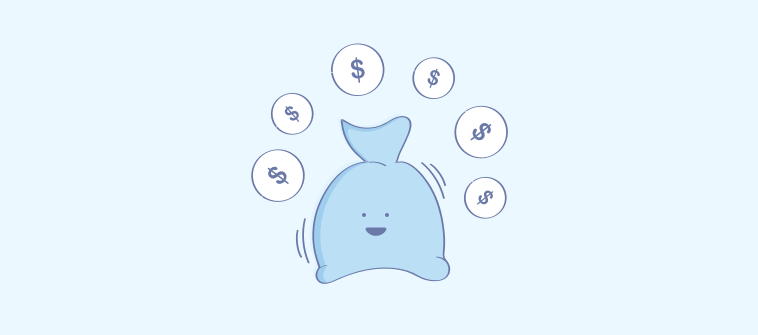
I wandered everywhere,
through shops and malls wide.
Guess who will get my money?
The Brand that stays by my side.
– Sincerely, Your Future Customer
Contemporary entrepreneurs are always engaged in a tug of war, believing that the strongest will win all the customers. However, ‘the winner takes it all’ approach is a hoax and far away from reality.
So then who makes it to the finale and becomes the winner?
Simple, the brand that values customer journeys. Your customers don’t care about your Value Proposition statements; they simply want to feel ‘Valued’ throughout their lifecycle with your brand.
Still, wondering why you should pay heed to the ‘journey’ rather than the destination?
Here is a figure that will allow you to pause and reflect. A study by Bain and Company found that after 10 purchases, your customers are likely to refer 50% more people as compared to one time purchasers.
When you look to improve the customer journey, customers get attracted to your brand like a magnet. They do not want to restrict themselves to that ‘first purchase’ and forget about you.
They want more.
They are looking for something beyond products; they are craving some memorable experiences, some value, and, most importantly, a brand that loves them back.
Exploring Customer Lifecycle Management
The lifecycle of a customer encompasses every interaction, right from the point they are introduced to your brand to the point when they turn into brand advocates.
As a brand that has embarked on a long journey, you can’t afford to take any touchpoint lightly. The famous American author and CX-Expert, Jonah Sachs explains this better. He believes, “Your brand is a story unfolding across all customer touchpoints. It is your responsibility to ensure that you are present wherever your customer is.”
Now, before we attempt to decode every stage of the customer lifecycle management process, let us first understand the definition of customer lifecycle management.

A Journey Through Time: Stages of Customer Lifecycle
Time is a funny thing they say. A year from now, you might have a pool of loyal customers or simply no business. It all depends on the actions you take today.
Business experts and authors come up with different methods to explain the multiple stages of the customer lifecycle frequently. However, an approach that stood the test of time was formulated by Jim Sterne and Matt Cutler. Th-eir work was published in a paper titled- “E-Metrics, Business Metrics for the New Economy“.
In their customer lifecycle analysis, Jim and Matt stated that Customer Life Cycle starts when you reach your target market and progresses until a loyal customer base is established. However, not every customer that comes face-to-face with your brand or even purchases from you initially, reaches the final stage due to abandonment and attrition. Lets us explore the 5 stages:
1. Reach
Reach is the initial stage which refers to the potential of a business to gain the attention of its target audience. Reach can be better explained by the number of people (or households) who become aware of your brand either through direct website footfalls, promotional efforts or word of mouth.
2. Acquisition
The objective of the acquisition stage is customer participation. In this stage, the customers show a keen interest in what you are trying to sell, they might walk into your store, or interact with a representative over call, email, or chat.
3. Conversion
While many businesses define the conversion stage differently but real conversion happens when a customer purchases from your business and pays in return. Sometimes customer interest is not enough to end up in a successful purchase and many potential customers may choose to abandon it at this stage. Abandonment can happen due to tempting competitive offers, slow checkout process, and many other factors.
Recommended Read: The Beginner’s Guide to Conversion Rate Optimization
4. Retention
The retention stage is all about encouraging repeat purchases and constantly engaging with customers. It is important to imbibe a sense of trust among consumers to foster a deep and long-term relationship. While all the previous stages are time-bound, the retention stage can often be prolonged depending on the value a business is willing to offer.
Recommended Read: How to Increase Customer Retention
5. Loyalty
When customers stick around with your business for long they become more than just loyal customers. They become loyal partners also termed as ‘Brand Advocates’. In this stage, customers spread the good word about your brand and bring in more customers. The more the number of customers that reach this stage, the better.
Recommended Read: How To Build A Customer Loyalty Program
Quote to Cash and Beyond: Extending the Customer Lifecycle
Metaphorically speaking, the customer lifecycle can be compared to a flower in bloom. Like many other things, a flower grows from a bud, and with enough nurture and care turns into a beautiful blooming flower. However, with the course of time the bloom begins to wilt, the flower shrivels up and is no longer pleasing to the eyes.
Just like the flower, a customer also grows when nurtured by your sales and customer service team and soon you start enjoying the fruits of loyalty. However, the inevitable truth is that all customer relationships have an end.
Now, there is no single reason for customer attrition. But lack of a personalized experience has killed more customer relationships over the years than anything else.
68% of customers leave because they perceive that you are indifferent to them.
In simpler terms, you cannot possibly hold onto a customer forever. But the golden question is- how do you atleast extend their lifecycle with you?
Manage the Expectations Right From the Start
One of the prime opportunities you can possibly grab to extend the customer lifestyle occurs at the very beginning of the customer relationship. While introducing a customer to your business culture, it becomes important to shed light on what your customers can expect from you, not just on day one or day 7 but over the course of time. Beware, failing to live up to your overly optimistic promises, can make you lose your customers. So think before you leap and adopt the ‘underpromise and over-deliver’ approach.
Make it More About Them Than You
Since your goal is to extend the lifecycle, you must indulge in every activity to make your customers feel special and appreciated. Believe it or not, but they are always evaluating the efforts your business is willing to put in. You can start by offering a personalized experience at every touchpoint, be it memorable in-store visits, or simply through personalized email responses. According to a report by Segment, 44% of consumers say that they will likely become repeat buyers after a personalized shopping experience with a particular brand. So, you need to treat every customer as an individual asset and appreciate their uniqueness.
Offer Support that Leads to Delightful Customers
Your business might have a customer who has been loyal to you for years, but guess what can ruin this beautiful long relationship? Yes, right, a bad customer support experience. Hanging up on your customers on-call or keeping them waiting for an email response for weeks can frustrate the customers. You need to constantly empower your support team and equip them with the necessary tools to offer improved assistance. Moreover, to resolve customer queries in real-time, delightful customer support software can be your best bet. Once, the issue has been rectified, you can float an NPS survey to measure customer loyalty.
Bonus Tip: You can leverage Qualaroo nudges, to gain valuable user feedback about your support operations. Qualaroo uses Sentiment Analysis to better understand customer emotions.
Encourage Loyalty Through Rewards
Customer loyalty does not come cheap, nor is it something you can go out in the market and buy. Your business needs to earn loyalty by shifting the focus back on the customer journey. In order to encourage loyalty and repeat purchases, you can introduce loyalty programs. Offering price discounts and product offers to your loyal customers also works great in two ways: first, it lets you retain your loyal customers. Second, they share how they got heavy discounts from your brand, making potential customers interested in buying from you too.
Why is Customer Lifecycle Management Important?
Focussing on CLM Makes You a Customer-Centric Brand
Bottom line, having a customer-centric culture is more than just a good thing- it has become a matter of survival.– Jim Marous
History is witness to the fact that whenever a business has focussed on being company-centric, it has lost a major chunk of its customer base. On the other side of the spectrum, emphasizing the customer lifecycle has made brands customers favorite and grab the attention of target users all over the world. Keeping the customer at the heart of every major and minor decision ensures a long term value for the customers. This also needs your service team to shift the focus from improving the ‘immediate’ customer satisfaction to striving to understand future customer needs.
CLM Gives Your Brand a Competitive Advantage
If you don’t have a competitive advantage, don’t compete. – Jack Welch
Today there are more alternatives for any given product in the market, and contemporary customers are enjoying their freedom of choice. However, rising competition has also presented multiple roadblocks for businesses on their pathway to success. Focussing on the customer journey makes your team so responsive and effective that consumers never really feel the need to look for an alternative. Competitors can never possibly compete with a business that is constantly evolving and learning to understand consumer needs better. Looking for ways to improve your communication channels has come across as one of the best customer lifecycle management best practices.
CLM Rewards You With a Pool of Loyal Customers
Loyal customers, they don’t just come back, they don’t simply recommend you, they insist that their friends do business with you.– Chip R. Bell
Attracting new customers to the doorsteps of your business can be 5 times more expensive than retaining the existing ones. As a smart business owner, you would not want to throw away your money just like that and go on a spree to acquire every potential customer. When every single member of your business understands and values the customer journey, customers would never hesitate to spend their valuable money with you. The customer lifecycle management process encompasses many customer loyalty programs that enable you to encourage loyalty and repeat purchases. You can use an NPS Survey to measure the likelihood of your customers promoting your business to others.
Watch this video to learn how to calculate the Net Promoter Score. ?
CLM lets You Gauge Your Marketing & Promotional Efforts
The best marketing strategy ever: Care. – Gary Vaynerchuk
Ask any modern business owner what they regret the most, and you will likely hear them complain about how they lost thousands of dollars on ineffective promotions. Marketing your product or services is a business necessity, however, are your marketing plans as good as they look on paper? Customer lifecycle management analysis is perhaps the best way to find out. When you keep the long-term approach in mind, you can effectively gauge the return on investment (ROI) of acquiring every single customer. No matter at what stage your customers have reached in their lifecycle, evaluating the promotional activities that got them in the first place is what really matters.
Why Should You Focus on Customer Lifecycle Marketing?
Marketing experts across the globe often make the grave mistake of adopting short-term marketing techniques and fail to see the bigger picture. However, many businesses are adopting customer lifecycle management in marketing to improve customer engagement throughout the journey.
Customer lifecycle marketing attempts to focus on the entire customer journey rather than focussing on any single marketing campaign or channel. Lifecycle marketing has popularized the use of an ‘always-on’ approach to marketing across multiple channels as well as devices. Now, if your organization follows a linear marketing strategy that only lasts till a purchase is made, you need to pull up your socks and be ready to make extra efforts.
How Customer Lifecycle Marketing improves the lifetime value of your customers?
Every customer has the potential to bring full value over their lifetime of doing business with your brand. But the only question that lies at the forefront: Is your business ready to tap on this?
As a world-popular coffee chain brand, Starbucks has always looked for ways to invest in their customers. The company has focussed on long-term marketing efforts for building brand loyalty.
Kissmetrics shared an infographic that displayed the lifetime value of a Starbucks customer. If the average weekly value of a regular customer is taken to be $24 per week, then a loyal consumer would be worth above $14,000 on average over the span of 20 years. Some eye-opening figures indeed!
Concluding Thoughts
The end of one customer journey means the beginning of the other.
Customers have always parted their ways with a brand and that is the inevitable truth. After all, every journey has an end, however, the good news is that while some customers may decide to go, there are more who would want to buy from you and be a part of your journey.
When you decide to focus on the customer lifecycle, your target users perceive you as a brand they can associate with for the long-term and start showing signs of loyalty.
We hope this blog could help you see the bigger picture of the customer journey.
Q1. What are the five stages of the customer life cycle?
The five stages of customer lifecycle are:
- Reach (Reaching out to customers across various channels like social media.)
- Acquisition (Customers start showing interest in your product/service range)
- Conversion (Customers are willing to pay and become paying customers.)
- Retention (Your business strives to retain existing customers.)
- Loyalty (Customers show loyalty through repeat purchases and by referring others.)
Q2. What is the formula for calculating customer lifetime value?
To calculate customer lifetime value you need to calculate average purchase value, and then multiply that number by the average purchase frequency rate to determine customer value. Once you calculate average customer lifespan, you can multiply that by customer value to determine customer lifetime value.
Q3. Why is customer lifecycle management important?
Customer lifecycle management gives a business ample opportunities to upsell, cross-sell, and foster long-term customer relationships. When you adopt a long-term approach to keeping customers engaged, they are bound to stay loyal with your business.
FREE. All Features. FOREVER!
Try our Forever FREE account with all premium features!







